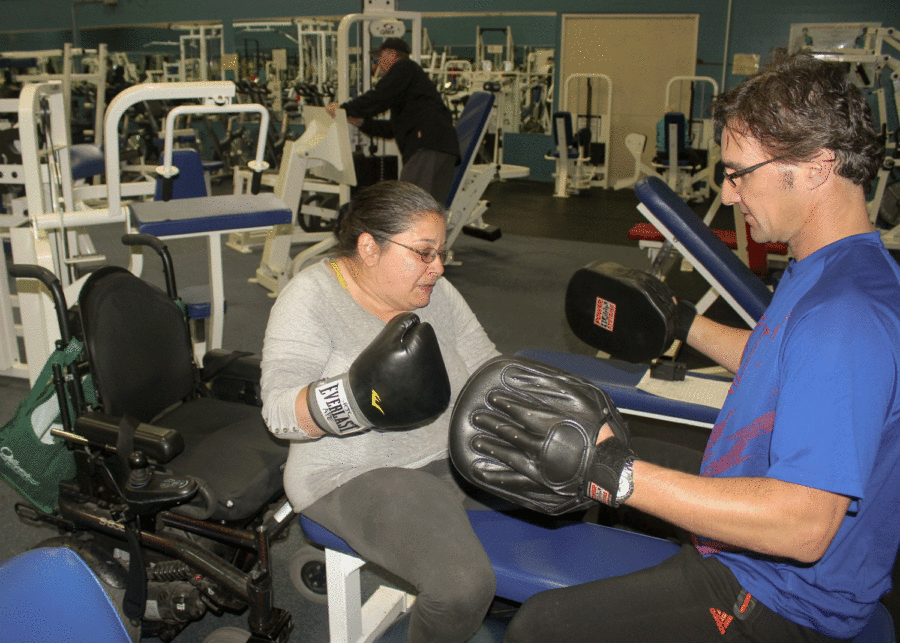To be able to tell their stories, students June Rader, Luigi Fabiano, Jessie Morgan and Patrick Loughlin have been working many years in the Adapted Physical Education classes (APE) at Santa Rosa Junior College.
Displayed on the department office wall, the motto “We all have a story to tell” means more to these students than for those who don’t have a physical disability.
After a stroke 19 years ago followed by six months of convalescence and rehabilitation, Rader, 79, returned to SRJC to take the APE classes. “I couldn’t walk, I couldn’t say one word,” said Rader, who now enjoys dancing both salsa and swing, with a sparkle in her blue eyes.
The APE program is part of the Kinesiology program and closely associated with the Disability Resources Department. It offers an opportunity for people challenged by disabilities to regain their physical skills and confidence. APE classes are adapted to facilitate the practice of physical education. Currently, 165 students are following either APE laboratory, APE body conditioning or APE swimming to improve coordination, flexibility, balance and cardiovascular fitness.
Fabiano, 78, started the program 18 years ago. “I was very weak. It took one year to get strong enough to come here,” he said. Thanks to years of diligent work, Fabiano regained physical fitness. Today, he enjoys a rich life with his wife and two children and has a busy schedule. In addition to his APE classes four days a week, he tutors English and history to students and immigrants.
To walk, dance, swim, they all had to exceed their limitations. Morgan, 42, said, “The biggest difference for me is I have built physical strength and I have been able to push the boundaries. I am more aware of my physical body. I just feel a little bit stronger and a little bit more confident.”
She is now able to move from her wheelchair to a bench to enjoy training in boxing with APE Instructional Assistant John Adams. It’s also with more confidence that Loughlin, who had a stroke in 2008, has taken control of his life. At 33 years old, he claims, “I am stronger than I was before, physically, mentally and emotionally.” Moreover, Loughlin made good friends through physical work with others. “I have friends in this class who understand me like nobody else does because they have experienced what I have experienced,” he said.
APE students consider the program a crucial opportunity in their lifes. It compensates for the lack of public services provided for people with special needs. According to Morgan, “As you get older, some services are not provided.”
APE Coordinator Kathy Bell added, “It’s really hard, especially with our health care system such the way it is. You can get three visits with a physical therapist and they are done with you. There is nowhere for you to go.”
APE classes include physical exercises like functional fitness, core strength, balance, swimming skills, endurance and flexibility. “People with disabilities – whether they have something that came on suddenly, or they are growing with or something they were born with – need to move. Everybody needs to move. We really work on finding ways to do it,” Bell said.
Bell and her team expand on the work and the vision of Johnny Hassenzahl who created the program in 1974. Fond of sports, he became quadriplegic after he broke his neck in a diving accident in the Russian River. Inspired by young men returning injured from the Vietnam War but who still wanted to practice sports, he decided people in wheelchairs need exercise too. Forty years later, the program continues to help hundreds of men and women who have suffered physical ailments and injuries to feel better.
More than a place to work, it’s a place to live. “I am gonna take classes here as long as I can. This is my school!” Rader said.


